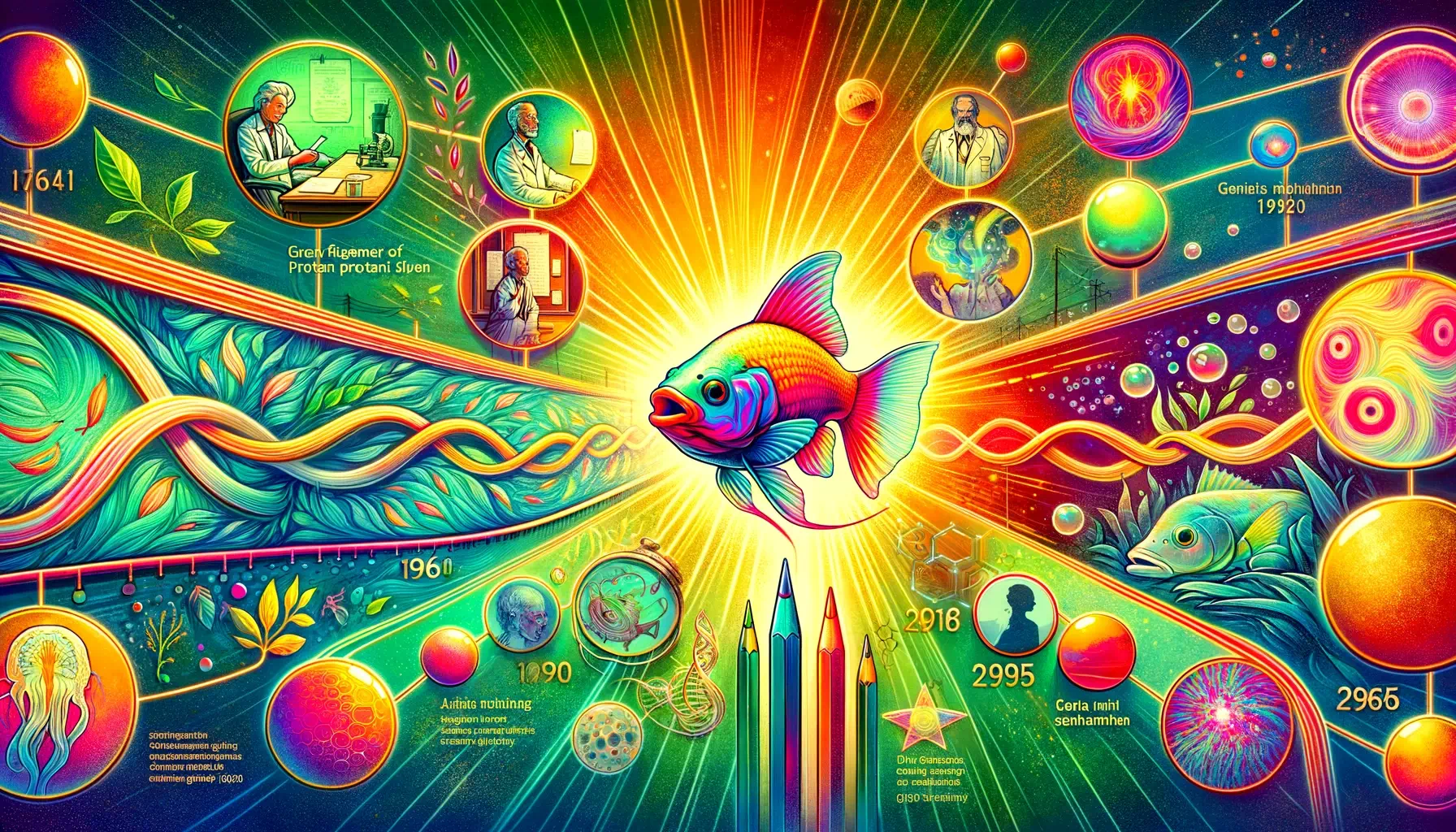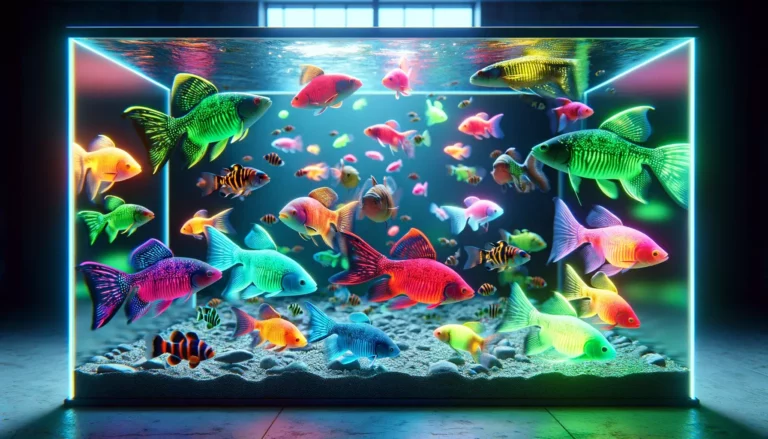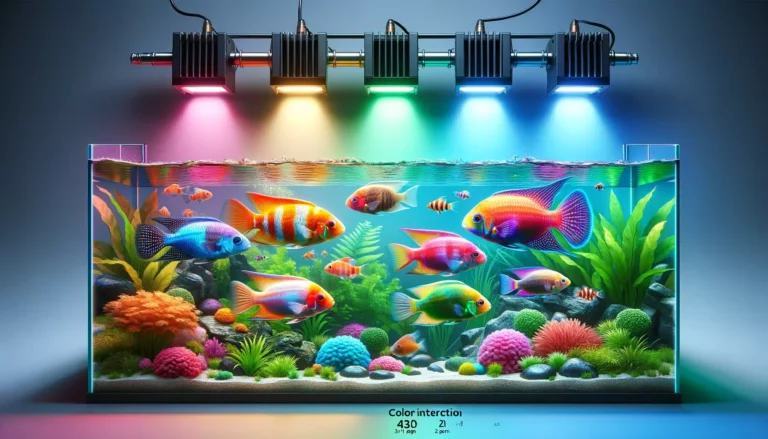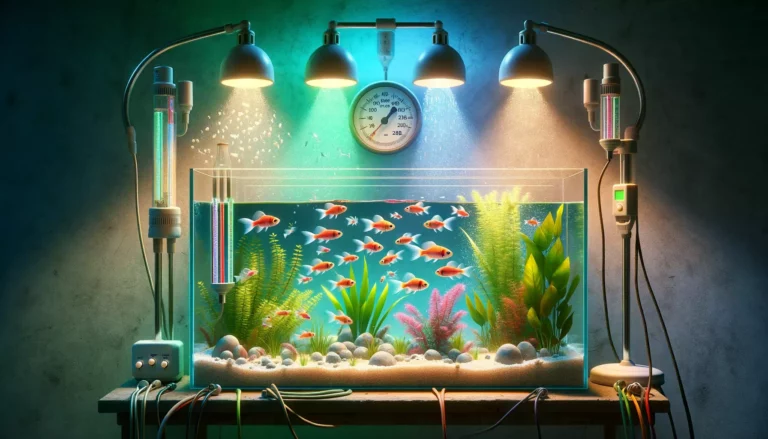History of the emergence of GloFish
The journey to GloFish creation began with several scientific advancements. In the 1960s, Osamu Shimomura discovered Green Fluorescent Protein (GFP) in jellyfish. This was a crucial milestone. Later, in the 1990s, scientists started using GFP in biology. They used it to study gene expression in cells. This was possible due to GFP’s ability to glow under certain light.
Further progress came in the late 1990s. Researchers at the National University of Singapore played a key role. They were studying the development of a zebrafish. Their aim was to detect pollution by engineering fish that glowed in polluted water. This idea was groundbreaking. It led to the first GloFish, which was a zebrafish. These fish were initially used for environmental monitoring purposes.
The turn of the century saw rapid developments in genetic engineering. Techniques became more refined and precise. This allowed for more controlled gene manipulation in organisms. The GloFish is an example of such advancements. It was now possible to introduce genes into an organism and see predictable results.
By the early 2000s, GloFish became available commercially. They were marketed as the first genetically modified pets. This raised various ethical and environmental concerns. However, they also sparked public interest in genetic engineering. The GloFish thus became an icon of both scientific progress and ethical debate.
Origin of the Idea for Creating Fluorescent Fish and Early Proponents
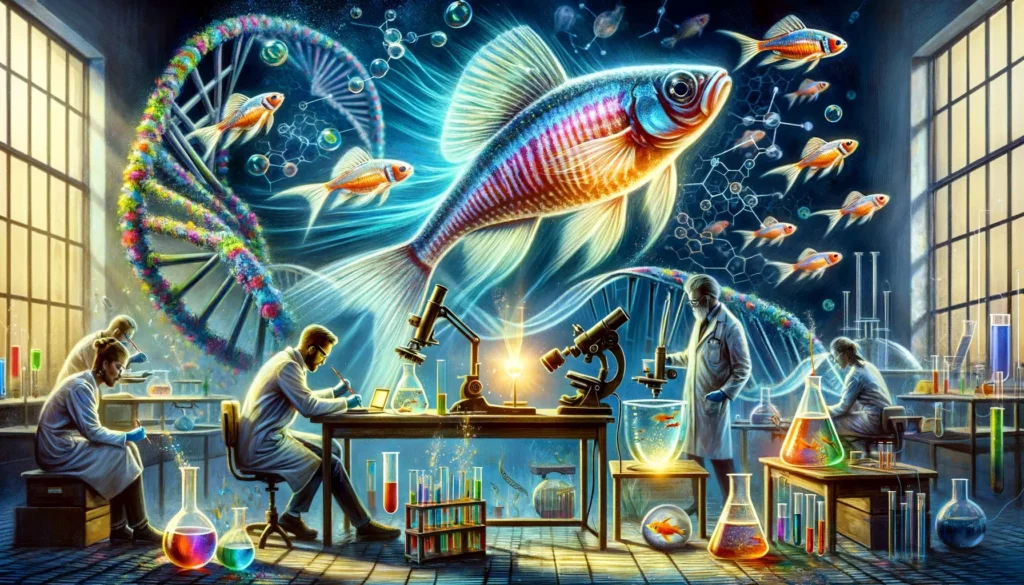
The idea for creating fluorescent fish was initially aimed at science, not pets. It originated from a desire to develop a living indicator for environmental pollution. This concept was spearheaded by Dr. Zhiyuan Gong and his colleagues at the National University of Singapore. In the late 1990s, they sought to create fish that could signal water toxicity.
Their approach was innovative. They inserted a gene from jellyfish into zebrafish embryos. This gene was responsible for the production of GFP. As a result, the modified zebrafish displayed a bright green fluorescence. This was a significant breakthrough. It meant that the fish could potentially glow in the presence of pollutants.
The initial purpose of these fish was strictly for research. They were to be used in labs to detect environmental toxins. However, their striking appearance caught the attention of the commercial sector. This led to a shift from research tools to potential pets.
Yorktown Technologies, a company in the USA, realized the commercial potential. They acquired the rights to market these fish. In 2003, GloFish were introduced in the American pet market. This marked the first time a genetically modified animal was sold as a pet.
The introduction of GloFish sparked both excitement and controversy. It raised questions about the ethics of genetic modification in pets. Despite this, GloFish gained popularity. They became a symbol of both scientific innovation and ethical debate in genetic engineering.
Challenges and Breakthroughs in Genetic Modification Technology for GloFish

The development of GloFish faced several technological challenges. Initially, inserting foreign genes into fish was difficult. Scientists had to ensure the genes were expressed in the right tissues. They also needed the genes to be heritable. This meant that the traits would pass on to future generations. Overcoming these hurdles required innovative genetic techniques.
A major breakthrough came with the use of microinjection. This method involves injecting foreign DNA directly into fish embryos. It was a delicate and precise process. Success rates were initially low. However, improvements in microinjection techniques increased efficiency. This allowed for the consistent creation of fluorescent fish.
Another challenge was achieving stable gene expression. The inserted genes needed to function correctly in the fish’s genome. Scientists had to identify suitable promoter sequences. These sequences control gene expression. Finding the right promoters was key to consistent fluorescence in GloFish.
There was also the challenge of public perception. Many people were wary of genetically modified organisms (GMOs). Overcoming this required transparent communication. It also involved demonstrating the safety and stability of GloFish.
The successful creation of GloFish was a testament to advancements in genetic engineering. It showed that precise genetic modifications were possible in complex organisms. This opened doors for further research in genetic engineering.
Ethical and Moral Debates in the Development of GloFish
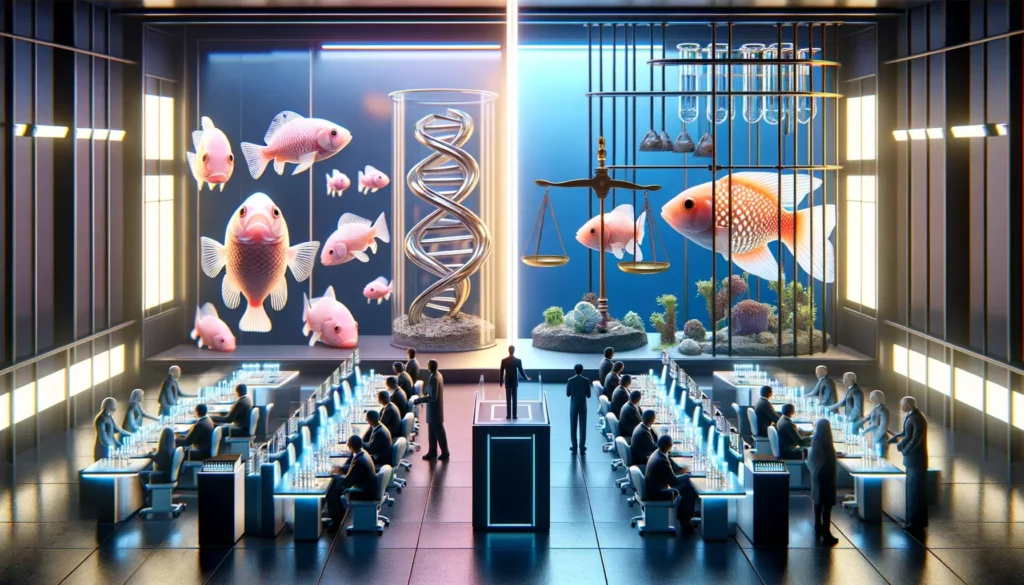
The development of GloFish sparked various ethical and moral debates. One major concern was the welfare of the genetically modified fish. Critics questioned whether the modifications could cause harm or discomfort to the fish. There were worries about potential health issues arising from the genetic changes.
Another ethical concern involved the impact on natural ecosystems. There were fears that GloFish could escape into the wild. This could potentially disrupt local ecosystems. The risk of cross-breeding with wild fish species was a concern. It raised questions about the ecological consequences of releasing GMOs into the environment.
There were also broader moral questions about genetic modification. Some people argued that it was unethical to modify animals for human entertainment. They felt that it commodified living beings. This debate touched on the deeper issue of human intervention in nature.
Conversely, GloFish proponents emphasized their potential benefits. They argued that GloFish is no different from other selectively bred pets. The educational value of GloFish was also noted. They were seen as a tool for teaching genetics and biotechnology.
The GloFish debate remains a complex one. It involves balancing scientific progress with ethical considerations. The development of GloFish highlighted the need for careful consideration of the ethical implications of genetic engineering. This debate continues to influence how new genetic technologies are developed and regulated.
Timeline of Significant Milestones in the History of GloFish

The history of GloFish is marked by several significant milestones:
- 1962: Osamu Shimomura discovers Green Fluorescent Protein (GFP) in jellyfish.
- Late 1990s: Dr. Zhiyuan Gong and his team at the National University of Singapore begin research on genetically modifying fish.
- 1999: The first successful creation of a fluorescent zebrafish. The fish were modified to express GFP.
- 2001: The team in Singapore develops more fluorescent fish. They introduce red and yellow fluorescent proteins.
- 2003: GloFish are introduced to the U.S. pet market by Yorktown Technologies. This marks the first sale of genetically modified pets.
- 2003-2004: GloFish become popular in the U.S., despite regulatory challenges and ethical debates.
- 2009: Additional GloFish colors are developed. These include orange and purple variants.
- 2011: The creation of GloFish with fluorescent proteins from corals. This expanded the range of available colors.
- 2015: Introduction of GloFish sharks, a new species in the GloFish family.
- 2020s: GloFish remain a popular choice in the pet fish market. They continue to spark discussion on genetic modification.
These milestones reflect the technological and commercial evolution of GloFish.
Evolution of the Perception of GloFish and Its Impact on Industries

The perception of GloFish has evolved significantly since their introduction. Initially, they were viewed with skepticism and concern. Many feared the implications of genetic modification in pets. There were concerns about animal welfare and ecological impacts. However, over time, public perception has become more accepting.
GloFish have had a notable impact on the pet industry. They introduced a new category of pets. This sparked interest in exotic and unique pet species. Pet stores expanded their offerings to include GloFish and related accessories. This boosted sales and attracted new customers.
In the scientific community, GloFish have served as a model organism. They have helped in research related to genetics and developmental biology. Their bright colors make them useful for educational purposes. They offer a tangible example of genetic modification technology.
GloFish have also influenced regulatory policies on genetically modified organisms (GMOs). They prompted discussions on the ethics and safety of GMOs in the consumer market. This has had implications for other industries considering the use of GMOs.
In recent years, the perception of GloFish has become more nuanced. They are seen as a symbol of both scientific innovation and ethical responsibility. Their presence in the market continues to encourage dialogue on the role of genetic engineering in society. This evolution reflects a broader trend towards understanding and regulating biotechnological advancements.

